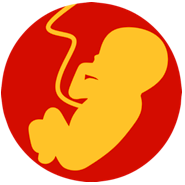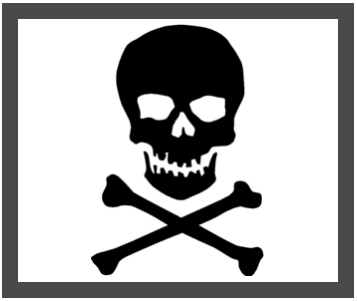Sentry Page Protection
Botanical name:
Euphorbia kansui
Parts used:
Prepared Root
Temperature & Taste:
Cold, dry. Bitter, Sweet, Toxic
The Euphorbias are all classed as Hot in the Western Tradition.
Euphorbia kansui
Parts used:
Prepared Root
Temperature & Taste:
Cold, dry. Bitter, Sweet, Toxic
The Euphorbias are all classed as Hot in the Western Tradition.
Uses:
1. Purges Water, Drains Fluid:
-accumulation of fluid in the chest and abdomen
-general Edema, Facial Edema, Ascites
-abdominal distention from fluid and phlegm obstructing
-used for Phlegm diseases in Tibet
2. Settles Wind, Clears Phlegm:
-convulsions and seizures from Phlegm obstructing
-Withdrawal-Mania and mental illness associated with Wind and Phlegm
3. Externally:
-painful and swollen skin nodules and lesions; applied topically
-topically in washes and plasters for Edema and Ascites
-topically to Swellings and Ulcers (TCM)
-for 'decomposed Wounds' (Tibet, Norbu)
Dose:
Begin with lower doses, increasing as needed.
Of the Prepared Root: 500mg–1500mg
Preparation:
1. Unprepared Gan Sui root:
The root is harvested, soaked in water, then sliced and dried. This is rarely used internally, but can be used externally in washes and plasters.
2. Roasted Gan Sui Root (Wei Gan Sui):
i. the cleansed root is stir-fried with bran until the bran is scorched, then the bran is removed.
ii. some cover the root with dough and roast until the dough is cooked, then remove the root and dry.
Roasting reduces toxicity and stop the tendency to cause vomiting.
iii. in Tibet it is roasted with corn until slightly scorched.
3. Vinegar-prepared Root (Cu Gan Sui):
Root is soaked in vinegar then stir-fried, then fully dried in the sun. This greatly reduces its toxicity and moderates its effects. Note that related Euphorbias in the West were prepared by steeping for 3 days in Vinegar..
4. Boiled Root (Zhu Gan Sui):
The root is boiled with bean curd until the middle of the root is not white. It is then sun-dried. (Iron should not be used or the root will turn black–Copper is most commonly used). This also lessens toxicity, but is not as commonly used as a the preceding method.
Substitute:
Used similarly to other Euphorbia species. In Tibet Dur byi is also used for Eupohorbia pekinensis.
Begin with lower doses, increasing as needed.
Of the Prepared Root: 500mg–1500mg
Preparation:
1. Unprepared Gan Sui root:
The root is harvested, soaked in water, then sliced and dried. This is rarely used internally, but can be used externally in washes and plasters.
2. Roasted Gan Sui Root (Wei Gan Sui):
i. the cleansed root is stir-fried with bran until the bran is scorched, then the bran is removed.
ii. some cover the root with dough and roast until the dough is cooked, then remove the root and dry.
Roasting reduces toxicity and stop the tendency to cause vomiting.
iii. in Tibet it is roasted with corn until slightly scorched.
3. Vinegar-prepared Root (Cu Gan Sui):
Root is soaked in vinegar then stir-fried, then fully dried in the sun. This greatly reduces its toxicity and moderates its effects. Note that related Euphorbias in the West were prepared by steeping for 3 days in Vinegar..
4. Boiled Root (Zhu Gan Sui):
The root is boiled with bean curd until the middle of the root is not white. It is then sun-dried. (Iron should not be used or the root will turn black–Copper is most commonly used). This also lessens toxicity, but is not as commonly used as a the preceding method.
Substitute:
Used similarly to other Euphorbia species. In Tibet Dur byi is also used for Eupohorbia pekinensis.
Main Combinations:
1. Fluid obstructing the Chest:
i. Euphorbia Gan Sui with Pinellia Ban Xia (as in Gan Sui Ban Xia Tang)
ii. fluid and phlegm obstructing the chest Euphorbia Gan Sui with Mustard seed (Bai Jie Zi)
iii. Euphorbia Gan Sui with Euphorbia Da Ji and Jujubes (as in Ten-Jujube Decoction [Shi Zao Tang])
2. Ascites:
i. Euphorbia Gan Sui with Licorice applied as a plaster to the navel
ii. Euphorbia Gan Sui with Poke root (Shang Lu)
iii. Euphorbia Gan Sui with Rhubarb (Da Huang), Radish seed (Lai Fu Zi), Aloeswood (Chen Xiang), Clove (Ding Xiang), Borneo Camphor (Bing Pian), artificial Musk (Ren Gong She Xiang) (as in the Medicated Plaster Xiaozhang Tie of TCM). This has been clinically studied and found effective in Cirrhotic Ascites.
3. Intestinal obstruction, Euphorbia Gan Sui with Rhubarb (Da Huang), Magnolia Hou Po and Peach kernel (Tao Ren)
4. Mania-Withdrawal from Wind-Phlegm, Euphorbia Gan Sui with Rhubarb (Da Huang), Pinellia Ban Xia, Hematite (Dai Shi Zhe)
5. Ulcers, Swellings, decoct Euphorbia Da Ji and Rhubarb and use topically.
Major Formulas:
Gan Sui Ban Xia Tang
Shi Zao Tang
Cautions:
1. It is a drastic purge like other Euphorbias. It should be used very carefully, beginning with a lower dose and increasing as needed. It is generally only used in strong bodies, although applied topically to the navel or abdomen can be used in weaker bodies.
2. Avoid in Pregnancy and the very Young.
3. Only used very briefly, to purge water. It is rarely taken for more than a couple of days (unless well diluted in formula).
4. It damages Yin and Fluids so should not be used in Yin deficiency.
5. It commonly causes nausea and vomiting, which can be lessened by preparing the root (such as roasting), and by taking with Licorice and/or Jujubes (Da Zao).
Main Preparations used:
1. It is a drastic purge like other Euphorbias. It should be used very carefully, beginning with a lower dose and increasing as needed. It is generally only used in strong bodies, although applied topically to the navel or abdomen can be used in weaker bodies.
2. Avoid in Pregnancy and the very Young.
3. Only used very briefly, to purge water. It is rarely taken for more than a couple of days (unless well diluted in formula).
4. It damages Yin and Fluids so should not be used in Yin deficiency.
5. It commonly causes nausea and vomiting, which can be lessened by preparing the root (such as roasting), and by taking with Licorice and/or Jujubes (Da Zao).
Main Preparations used:


